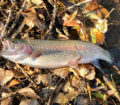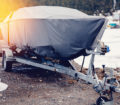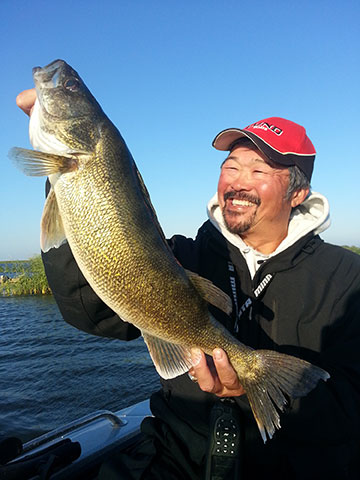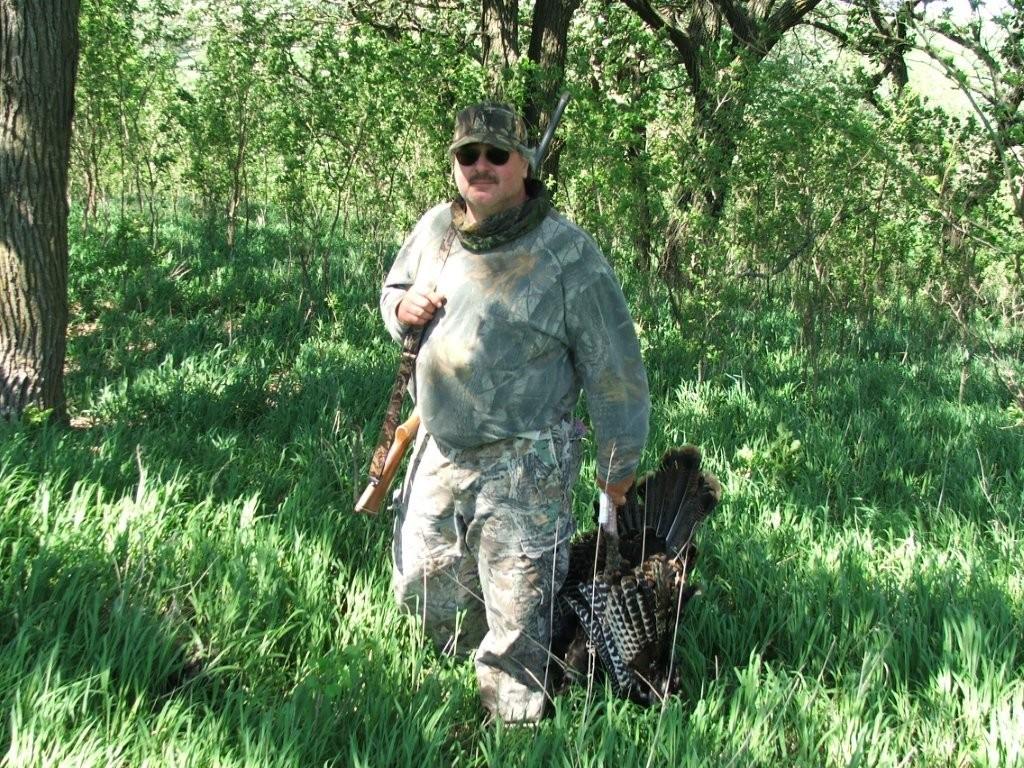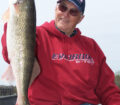 By Spencer Bauer
By Spencer Bauer
Flatheads rule the river. Period. When flatheads hit a certain size, predation is not much of a concern. They go where they want, when they want. No other fish messes with them.
At the end of the summer we see the highest water temperatures of the year. These high temperatures boost a flathead’s metabolism, and their ravenous appetite increases right along with it. Flatheads go on a feeding spree, eating the biggest meal they can find, and most fish in the river are on the menu.
Bait
During prespawn (usually June in Iowa), flathead location is based on food, spawning, and comfortable flow rates for them to rest during the day. There are always exceptions, but this is a general rule. After spawn, flatheads focus shifts mainly to feeding enough to suppress their massive diet that escalates as the water temperature rises.
Many people think this means these fish go on a feeding spree, but from my experience this is often not the case. It seems these fish would rather eat one giant meal and spend a few days digesting it. Two pound bass? Gone in a vacuum of moving water and crushed bone. Six pound channel cats? Yep, still on the menu. A 40 pound flathead has no issues taking down an eight pound carp. There is never a bait too big, and late summer seems to be the time of year where giant baits really shine.
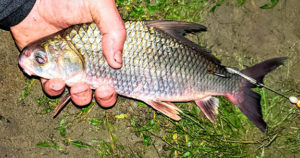
After the spawn wraps up in August, I’m very partial to hand-sized green sunfish, 1-2 pound carp, and the biggest bullheads I can find. If you can cast it, a flathead will eat it. If your bait is too big to cast, consider wading out and lobbing it, or placing baits with a kayak or boat. Of course, there are other fish that would work as bait, but those are very hardy, even when the weather is hot. Of course smaller baits still catch fish too. The most important thing is to make sure your bait is lively and in good shape. Given the choice though, I’ll take a big bait over a small one every time.
Location
Flathead homes vary based on the body of water. Not necessary just because it’s a different water, but rather because of the differences in habitat availability. However, the principles remain the same. Flatheads prefer heavy structure, particularly overhead structure they can hide under. Slab concrete, large trees, or large boulders provide crevices for large fish to take shelter during the day.
Small streams are not large rivers and flatheads set up differently in them because of the different habitats there. Fishing during the day requires you to anticipate the exact location the flathead is at, and place a bait as close to him as possible. Structure in deep water is a great place to start. This technique requires lots of practice though, as there are many “spots on the spot” that tend to concentrate fish. Time on the water and attention to what does and doesn’t work is the best teacher out there for daytime flatheads.
At night, instead of targeting where flatheads are at, I target where they are going. Current seams in proximity to their daytime location concentrate feeding fish at night. The structure that creates the current seam isn’t nearly as important as the location of the current seem to their home. Current breaks at the head of a hole tend to be a higher percentage area than those downstream of the structure they live. The fun thing about flatheads though. They are king of the river and they go wherever they feel like. Experiment with bait placement, even after you have experienced success and make note of the conditions that led to the fish caught and the nights you don’t get a bite.
Large river flatheads want the same thing, but have many more options. I have not had consistent success in the deepest portion of big rivers. In my experience, this is mainly blue cat territory. There are always exceptions, but we are talking about fishing locations that give you your best odds.
A good starting point is 15-30 feet of water in reduced current. Naturally, some fish will always be shallower and some deeper, but that will get you going in the right direction. Big rivers have a consistent, heavy flow even in low water times. Flatheads relate to current, but while feeding, tend to avoid the main flows. Instead they roam current breaks in moderate current, or areas of slowly swirling water.
Location may not be the most exciting part of fishing, but in my opinion it is without a doubt the most important. It doesn’t matter what tackle or bait you have. If there are no fish where you are at, you will not catch them. Even as you begin to have some success, or have been catching big flatheads for years, it is a good idea to experiment with different spots and different types of habitats. There are no fences in the river (well, most rivers), and flatheads show up in funny locations sometimes.
Tackle
This subject always makes me scratch my head. Too often I see people put in lots of time and effort with the dream of catching a giant fish, but don’t use tackle appropriate for landing a giant fish. Flatheads are big and strong, capable of surprising bursts of speed for such a large animal, and the head shakes they throw are strong enough to bend light wire hooks, snap lines, and break hearts. If you want to catch a monster, use monster tackle.
Rods should be sturdy in the bottom half, with a little play at the end. If the rod is stiff from end to end, you will have a tougher time gently lob casting live baits. Also, these baits are more likely to tear off the hook after they’ve been casted if the top half the rod doesn’t have a little give. With that being said, the bottom half needs to have enough rigidity to pull fish away from cover. If the rod bends too much, you have less control of the fish. This can be a major issue in the heavy cover many flatheads call home. I’m a fan of Whisker Seeker Tackle heavy action Full Metal Jacket rods. They are a lot of power in a compact, easy to manage package, making them a joy to fish with. That being said, there are numerous excellent options available that are more than capable of getting the job done.
Reels should be durable with appropriate line capacity for the line you choose. Durable doesn’t necessarily mean expensive. The ability to put out high drag is nice, but putting your thumb on the spool when you are pulling fish away from structure will work as well. I’ve used Abu Garcia Ambassadeur 6500 and 7000s for years. There are also many options available from Penn, Diawa, and Okuma. Spinning reels will work, but no spinning reel can produce the torgue a big bait casting reel has. This ends up being very important while trying to control a fish in heavy cover and tight quarters.
I like braided line, but at the end of the day, the best line is the line you like the best. Many people argue that braid is not as abrasion resistant as monofilament line, but I would have to disagree. Braid is much thinner than mono. If braid is the same diameter as mono, I believe the braid is actually more abrasion resistant. For that reason I use 85 pound line, not because it has a higher break strength, but because it is thicker and handles rubbing on rock and timber better. For mono, I can not in good conscience recommend anything less than 50 pound break strength. In many situations 60-80 pound test is better.
For terminal tackle, I like a large J hook. Match it to the bait. Large baits require a 10/0-12/0 sized hook. Circle hooks will work as well, but in my experience, I’ve had better hook up rates using J hooks. Flatheads are funny and often do not pull against the rod after they take the bait. When this happens, circles become less effective because the fish does not create the resistance needed to put the hook in the corner of their mouth. Reeling down on a fish is an option, but I’ve had inconsistent success with this. For me, a big J hook finds its home in the fishes mouth more consistently than a circle hook does. I’m sure some of it is user error with circle hooks, but thats the thing with fishing. Try different things to find out what works for you.
Putting It All Together
Prespawn flathead fishing can be fantastic, but for consistently hooking fish, the end of the summer into fall is my favorite time. Water temperatures are high and fish are feasting to regain weight after they’ve spawned and keep up with their ramped up metabolism. All of that adds up to fantastic fishing and a great opportunity to set the hook on the biggest fish of your life! Put a big, lively bait in a that big flathead’s lair and you will get bit.
Author: Spencer has been pursuing catfish his whole life, and focusing on flatheads for several years. He runs the YouTube Channel, River Certified, as well as a blog at www.rivercertified.com.

